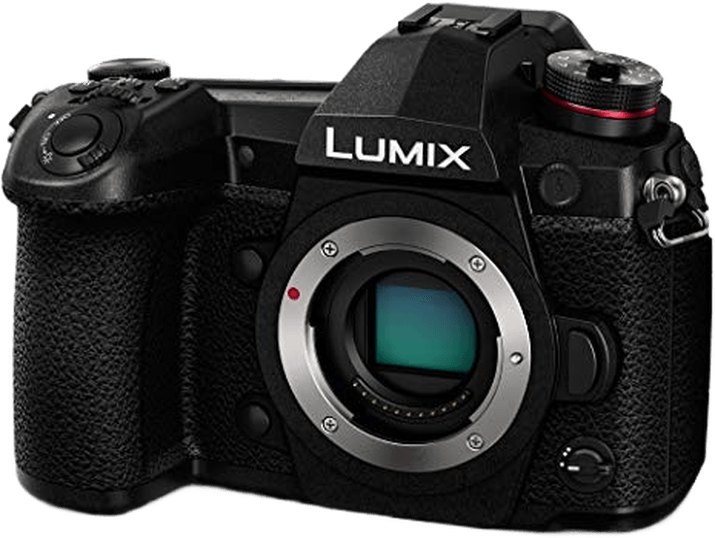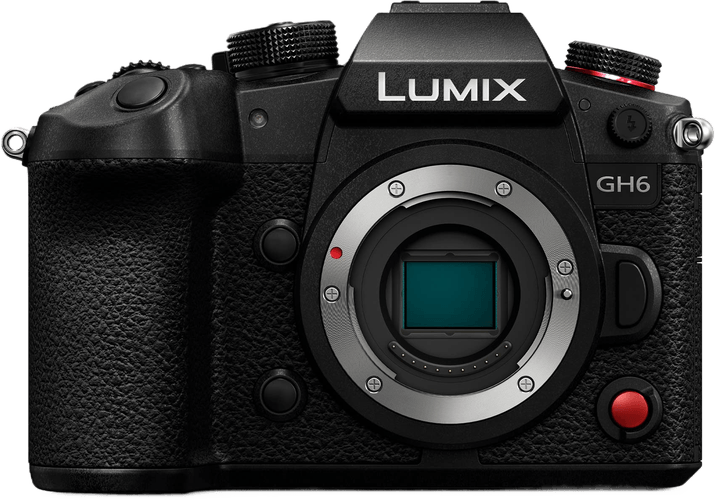Panasonic Lumix DC-G9 vs Lumix DC-GH6 Comparison
Panasonic Lumix DC-G9

Panasonic Lumix DC-GH6

The Panasonic Lumix DC-GH6 edges out the Panasonic Lumix DC-G9 with a score of 73/100 compared to the G9’s 70/100. Both cameras are mirrorless and share similar dimensions, with the GH6 being slightly larger at 138 x 100 x 100mm and heavier at 823g. The G9, on the other hand, is lighter at 658g and measures 137 x 97 x 92mm.
The GH6, released in 2022, outperforms the G9, which was released in 2017, in various aspects. Its higher score reflects its improved features and performance. However, the G9 has a lower launch price of $1699, making it more budget-friendly compared to the GH6’s launch price of $2199.
While the GH6 takes the lead in terms of performance and features, the G9 remains a viable option for those seeking a more affordable and lightweight camera. Each camera caters to different preferences and needs, so consider these factors when making a decision.
Panasonic Lumix DC-G9 vs Lumix DC-GH6 Overview and Optics
The Panasonic Lumix DC-GH6 wins the optics comparison with a score of 69/100, while the Panasonic Lumix DC-G9 scores 65/100. Both cameras share several specifications, including a CMOS sensor, Venus Engine processor, DXOMARK sensor score of 71, Micro Four Thirds sensor size, Micro 4/3 lens mount, and image stabilization.
The Lumix DC-GH6 outperforms the Lumix DC-G9 with its higher megapixel count of 25 compared to the G9’s 20 megapixels. This results in the GH6 producing more detailed and higher-resolution images. However, the G9 has a faster shooting speed of 20 frames per second, while the GH6 shoots at 14 frames per second. The G9’s higher shooting speed allows it to capture fast-paced action more effectively.
Despite the GH6’s slower shooting speed, its higher megapixel count makes it a better choice for photographers seeking higher image quality and resolution. The G9, on the other hand, is better suited for those who prioritize capturing fast-moving subjects, as its faster shooting speed allows it to freeze motion more effectively.
Taking these factors into account, the Panasonic Lumix DC-GH6 is the superior camera in terms of optics due to its higher megapixel count, resulting in better image quality. The Lumix DC-G9, however, is still a strong contender for photographers who prioritize shooting speed. Ultimately, the choice between these cameras depends on the individual’s specific needs and preferences.
Panasonic Lumix DC-G9 vs Lumix DC-GH6 Video Performance
The Panasonic Lumix DC-GH6 outperforms the Panasonic Lumix DC-G9 in video capabilities, with a video score of 96/100 compared to the G9’s 83/100. Both cameras share some common video features, such as 4K video resolution, built-in time-lapse functionality, and a maximum video frame rate of 60fps for the G9 and 120fps for the GH6.
The GH6 excels in its higher maximum video resolution of 6K, offering 5760 x 2880 dimensions, which is significantly larger than the G9’s 4K resolution with 3840 x 2160 dimensions. Additionally, the GH6 boasts a higher maximum video frame rate of 120fps, doubling the G9’s 60fps. These features enable the GH6 to capture more detailed and smoother video footage, making it the superior choice for videographers.
While the G9 may not match the GH6’s video prowess, it still offers respectable video capabilities. Its 4K resolution and 60fps frame rate are suitable for most casual users and amateur videographers. Furthermore, the G9’s built-in time-lapse functionality is a shared feature with the GH6, allowing both cameras to create dynamic and visually engaging time-lapse videos.
When comparing the video capabilities of the Panasonic Lumix DC-G9 and the Panasonic Lumix DC-GH6, the GH6 stands out as the clear winner, offering a higher video score, 6K resolution, and a maximum video frame rate of 120fps. However, the G9 remains a viable option for casual users and those who do not require the advanced video features of the GH6.
Panasonic Lumix DC-G9 vs Lumix DC-GH6 Features and Benefits
The Panasonic Lumix DC-G9 and the Panasonic Lumix DC-GH6 both have a feature score of 83/100, making them equal in terms of features. They share common specifications such as a 3-inch screen size, touchscreen capability, flip screen, lack of GPS, and the presence of WIFI and Bluetooth connectivity.
The Lumix DC-GH6 has a higher screen resolution of 1,240,000 dots compared to the Lumix DC-G9’s 1,040,000 dots. This means that the GH6 provides a clearer and sharper display, which is beneficial for photographers who want to review their images and videos with better detail on the camera itself.
On the other hand, the Lumix DC-G9 does not have any distinct advantages over the GH6 in terms of features. Both cameras have the same feature score and share most specifications, making them quite similar in this regard.
In conclusion, the Panasonic Lumix DC-G9 and the Panasonic Lumix DC-GH6 have almost identical features, making them a tie in this aspect. The only noticeable difference is the higher screen resolution of the GH6, which can be beneficial for users who prefer a clearer display. However, this slight advantage may not be significant enough for potential buyers to choose one model over the other solely based on features. Other factors, such as price, performance, and personal preference, should also be considered when deciding between these two cameras.
Panasonic Lumix DC-G9 vs Lumix DC-GH6 Storage and Battery
The Panasonic Lumix DC-G9 outperforms the Panasonic Lumix DC-GH6 in storage and battery with a score of 71/100, compared to the GH6’s 68/100. Both cameras share similarities, such as having two memory card slots and USB charging capabilities. They also accept UHS-II compatible SD cards, while the GH6 additionally supports CFexpress B cards.
The G9’s advantage lies in its longer battery life, providing 400 shots per charge compared to the GH6’s 360 shots. This difference allows for more extended shooting sessions without needing to replace or recharge the battery. The G9 utilizes the DMW-BTC13 battery type, contributing to its superior performance.
On the other hand, the GH6 offers more versatility in memory card options by supporting both SD and CFexpress B cards. This feature may appeal to users who require faster read and write speeds or larger storage capacities provided by CFexpress B cards.
Taking these factors into account, the Panasonic Lumix DC-G9 proves to be the better choice in terms of storage and battery performance. However, the Panasonic Lumix DC-GH6 may suit those who prioritize memory card compatibility and speed.
Panasonic Lumix DC-G9 vs Lumix DC-GH6 Alternatives
If you haven’t decided on a camera just yet, have a look at these camera comparisons too:
